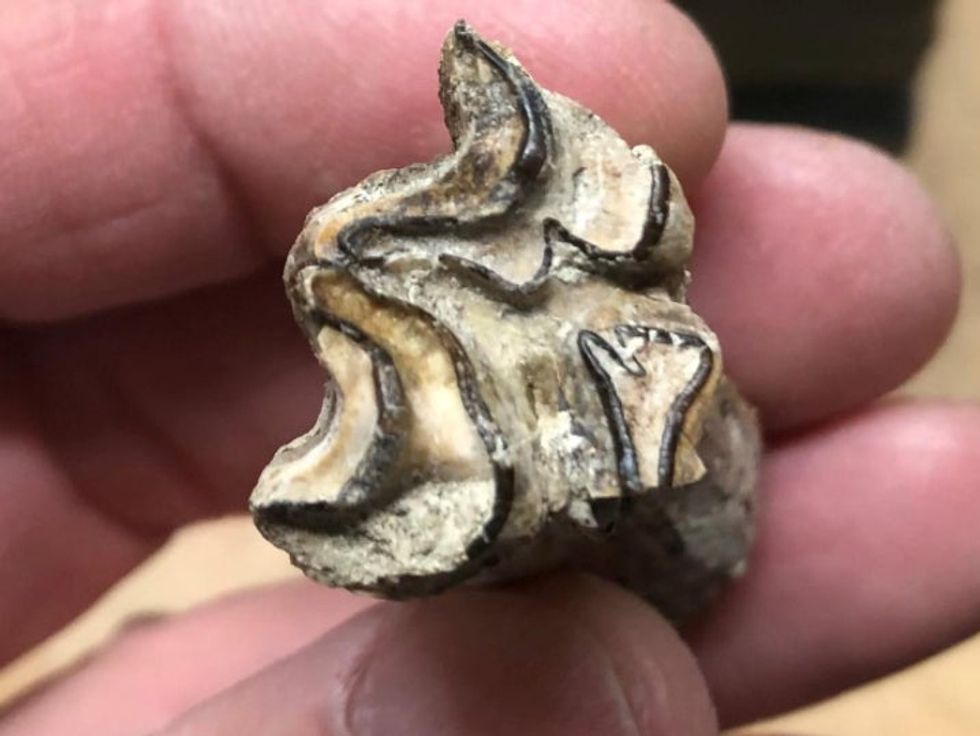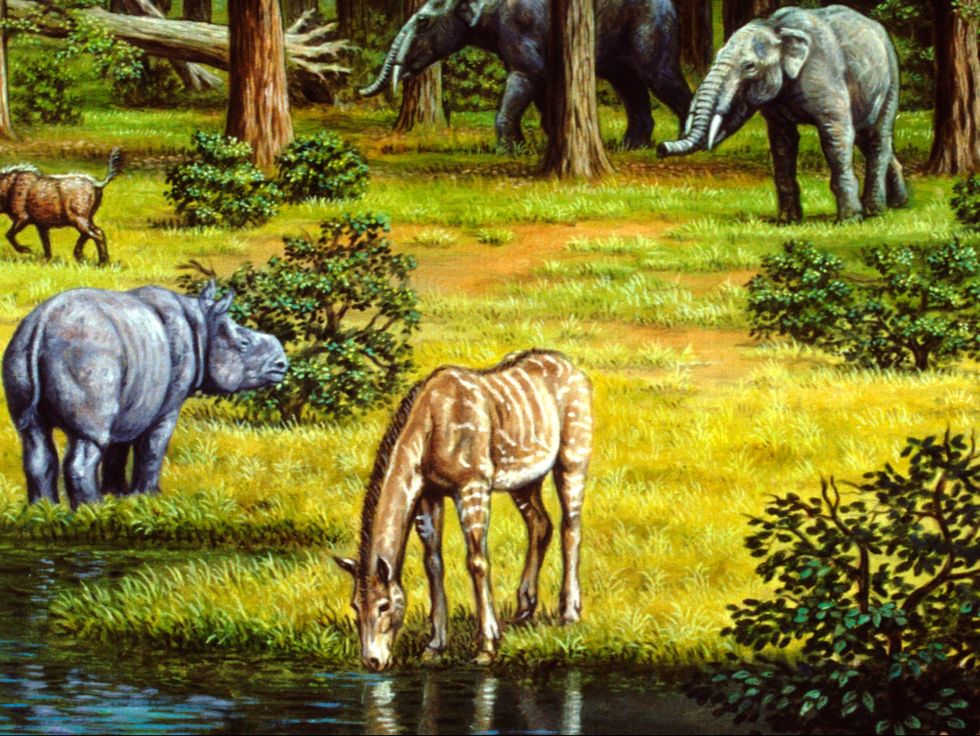
California’s Sierra Foothills are now the site of some of the most significant prehistoric fossil finds in the state’s history — including giant camels, four tusked miniature elephants, and rhinoceros that grazed the lush landscape.
This discovery began last summer on land preserved by the East Bay Municipal Water District when Greg Francek, a water district ranger found an interesting-looking rock on his routine patrol of the area. The rock had markings that looked like bark. That “rock” turned out to be a petrified tree.
As a result, Francek gathered colleagues, consultants, and scholars within the science community to continue the search for fossils. And they found a whole grove of petrified trees that was in an area with thousands of bones.



“I didn’t realize what I was looking at was actually the remains of great beasts that had walked this area millions of years before,” said Francek, who has been a ranger and naturalist for a decade.
Soon after, scientists begin uncovering more fossils of prehistoric animals that existed in the Miocene Epoch. This was roughly 50 million years after dinosaurs grazed the continent, and it would also be millions of years before humans were even a thought. During this time, volcanic activity was starting to shift the geological plates that hadn’t formed the Sierra Nevada. Southern California was also underwater.

Although a lot of research still has to be done to understand what the skeletal fragments are, there have been exciting discoveries, including giant camels with long necks like giraffes that could eat out of 20ft trees.
But the most common fossil remains that were discovered at the site were gomphotheres (the Greek for “welded beast), or elephants that were very small and had four tusks— two below their mouth and two above. Scientists also found tortoises and birds.

Predators haven’t been that easy to find. Researchers did find a few bone fragments here and there from unidentified carnivores.
However, teeth marks and some of the other bones found suggest that wild dogs might have hunted the animals. One of them happened to be a beardog that could grow to 8 feet long.
The researchers’ findings also show the shift from forests to grasslands.
“The whole planet started to cool down at this time, ultimately leading to ice ages. So what’s really cool about this site is that you can see classic forest creatures as well as grassland creatures,” said Dr. Russell Shapiro, a geology professor at California State University, Chico.
The water district in the San Francisco east bay area is taking precautions to not reveal the site’s location in fear that somebody might damage the area. Despite this, there are still ways to get a glimpse of the findings. EBMUD offers an online tour of fossils for classrooms and the general public.
Students have the opportunity to prepare the fossils for studies by several scientists at Chico State. After that, the materials will be moved to the University of California Museum of paleontology in Berkeley. It will be displayed and accessible to researchers across the globe.
The fossils are being taken to Chico State, where students are getting a chance to help prepare them for further study by a broad array of scientists. Eventually, the materials will be transferred to the University of California Museum of Paleontology in Berkeley, where researchers can be displayed and accessed worldwide.
“The partnership with EBMUD is allowing our students to have first-hand experience, from the discovery to the preparation and the protection of these amazing fossils.”, said Dr. Shapiro thrilled at the
EBMUD is continuing to study and preserve the findings of these incredible fossils.
Read more about the research here.












